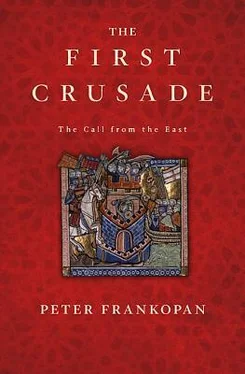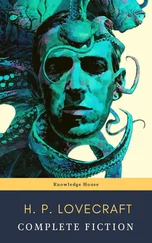The Crusaders set off for Nicaea in the early summer of 1097, reaching the town in May. As soon as camp was set outside the imposing walls, the westerners tried to take the town by storm. This took Alexios aback; he had concluded long ago that it could not be taken by force. 6Indeed, he had sought military help from the west in the first place precisely because of the failure of his own efforts on Nicaea in the early 1090s. Now his assumption that the only way to capture Nicaea was through a lengthy siege, supported by substantial manpower, was immediately challenged by the Crusaders.
Rather than set up a perimeter and slowly tighten the noose round the town, the knights made a quick assessment of Nicaea’s fortifications and straightaway set about probing its defences and attempting to breach the walls. They began their assault before some of the principal leaders had even reached the town; Robert of Normandy and Stephen of Blois arrived to find that the attack was already under way. 7
Although enthusiastic, the westerners’ initial efforts made little impression. According to one Crusader, Nicaea had been enclosed with such lofty walls that its inhabitants feared neither the attack of enemies, nor the force of any machine. As we have seen, the town was also perfectly positioned and well protected by natural terrain, including a substantial lake to the west. 8To overcome the defences, the knights designed and built stone-throwing machines which, while not capable of seriously damaging the vast fortifications, were intended to provide cover so sappers could get close enough to the walls to start compromising them from below. A team under the supervision of Raymond of Toulouse soon managed to collapse a section of the defences, raising spirits in the Crusader camp and startling the Turkish garrison. It was only by working furiously through the night that the defenders were able to mend the damage that had been done. 9
The Crusaders persisted despite sustaining early casualties. One leading knight, Baldwin of Calderun, had his neck broken by the blow of a stone hurled from the parapets as he led a charge against the town’s gates. Other prominent figures were also struck, including Baldwin of Ghent, who was mortally wounded by a fine shot from the battlements. Disease also began to take its toll: the young and courageous Guy of Possesse came down with fever and died soon after. 10
Those inside Nicaea held important strategic advantages over the attackers. The view from the towering battlements and walls enabled them to see what the Crusaders were doing and prepare accordingly.
They could also easily fire projectiles and arrows or drop objects down on to the exposed men below. And the Turks protecting Nicaea were resourceful: burning oil, grease and pitch were all used against those who came within touching distance of the walls. 11Furthermore, the Turks knew that the Crusaders had been gathering at Kibotos since the summer of 1096, and they had spent months stockpiling the supplies they would need to withstand a lengthy siege. They seemed so confident that they would not be forced to surrender that Nicaea’s governor, Kilidj Arslan, was not even in the town during the siege but elsewhere in Asia Minor. 12Like Alexios, Nicaea’s defenders felt that there was little chance that the town would be taken by assault.
They demonstrated their confidence by treating those they killed conspicuously badly. One knight from Robert of Normandy’s contingent found himself isolated in an attack and was picked off by the town’s defenders. After he had been killed, a device with sharp, iron claws attached to a chain was lowered over the walls, which clasped the corpse and dragged it back up over the battlements. The cadaver was then hung from a noose and suspended naked over the side of the walls for all to see. The message was clear: it was a waste of men, time and energy trying to take Nicaea. 13
The Crusaders matched like with like. A detachment of Turks sent to relieve the garrison at Nicaea was defeated and its men all decapitated, their severed heads fixed to the end of spears that the westerners paraded to the town’s inhabitants. As Anna Komnene noted, this was done ‘so that the barbarians would recognise from a distance what had happened and being frightened by this defeat at their first encounter would not be so eager for battle in the future’. 14
The knights stepped up pressure on the town. Siege warfare was an area where western European technology had evolved rapidly in the eleventh century. The Normans of southern Italy in particular had mastered the art of attacking heavily fortified towns and storming them, rather than slowly strangling them into submission. Their rapid conquests of Apulia, Calabria and Sicily in the 1050s and 1060s owed much to the innovation that they brought to siege craft and to the inventiveness they showed when dealing with well-defended fortresses. Thus the construction of siege engines, designed to test Nicaea’s defences, had started as soon as the first knights approached the city.
Attention was focused on one section of the walls in particular, which was protected by the Gonatas tower. The tower had suffered damage during a rebellion a century earlier and was already leaning. The expedition’s leaders immediately recognised it as the weakest point in the town’s defences. 15Raymond of Toulouse oversaw the design of a special siege engine to use against the tower, a circular contraption covered with thick leather hides to protect those working within it. After it was pushed against the wall, sappers with iron tools worked at its foot, digging out stones from the base of the tower and replacing them with wooden beams which were then set on fire. Although the Gonatas tower did not immediately collapse, the Crusaders’ work produced a visible deterioration in the wall. It also provoked panic within Nicaea. 16
Alexios sought to take advantage of the growing anxiety among the Turks. The emperor had taken up an advanced position at Pelekanos, from which he could monitor and direct proceedings. As the first assaults on Nicaea began, Manuel Boutoumites secretly entered the town to try to negotiate a settlement, reminding its inhabitants of the generosity the emperor had shown to Turks in the past and warning of the consequences should the Crusaders breach the town’s defences. Manuel produced written guarantees of how they would be treated if the city was surrendered immediately. 17
The Turks rejected this overture, confident of the strength of Nicaea’s defences. In addition, they were also receiving reports that an enormous army was on its way to relieve the town. Indeed, in the early stages of the siege, it was the Crusaders who had reason to be anxious. Spies found in the westerners’ camp, pretending to be Christian pilgrims, revealed under torture that the garrison in Nicaea was communicating freely with the outside world and that a large Turkish force was heading for the town. 18The sight of supplies being brought into the town across the Ascanian Lake to the west underlined the need to take decisive action, rather than hope a long siege would bring about surrender.
Controlling operations carefully, Alexios gave the order for ships to be transported overland from the Gulf of Nikomedia to blockade the lake, while ordering the assault on the town to be stepped up. Byzantine archers were deployed close to the walls and ordered to provide such heavy covering fire that the Turks were unable to raise their heads over the battlements. Imperial forces, accompanied by trumpets and drums, launched into war cries, giving the impression that a heavy attack was under way. The sight of a wave of imperial military standards advancing in the distance suggested the imminent arrival of yet more men to attack the town. 19
Alexios’ plan was to present a picture of overwhelming military superiority and to seek the surrender of Nicaea on his terms. Once again, Manuel Boutoumites was secretly dispatched into the town, taking with him a chrysobull , a document signed by the emperor in gold letters, setting out terms. These included an amnesty, as well as liberal gifts of money, ‘extended to all the barbarians in Nicaea without exception’. 20This time the emperor’s initiative and cunning convinced the Turks to surrender.
Читать дальше











